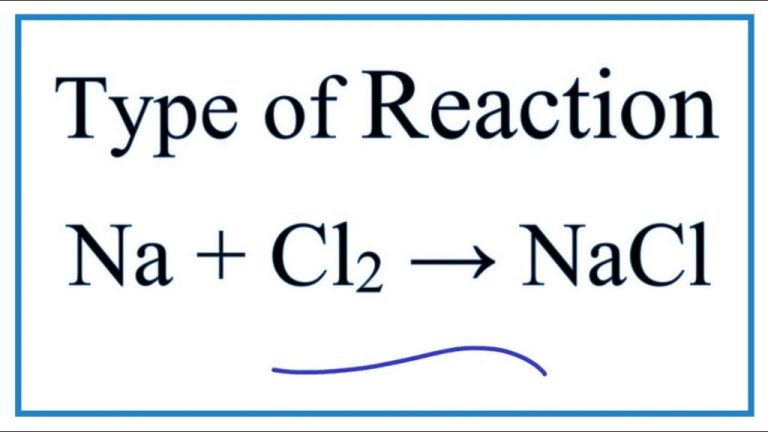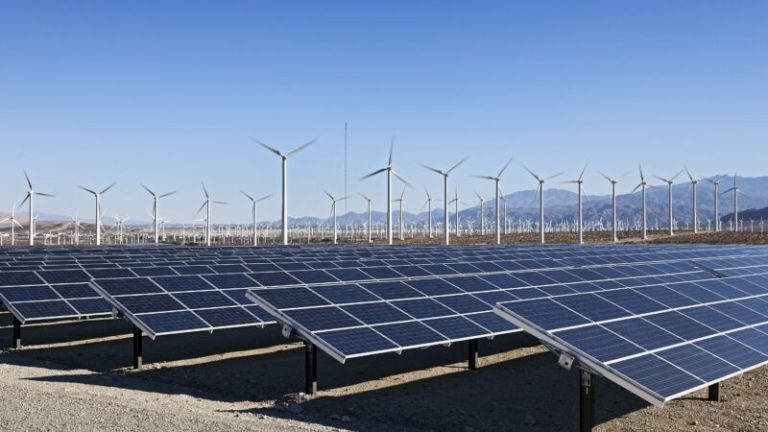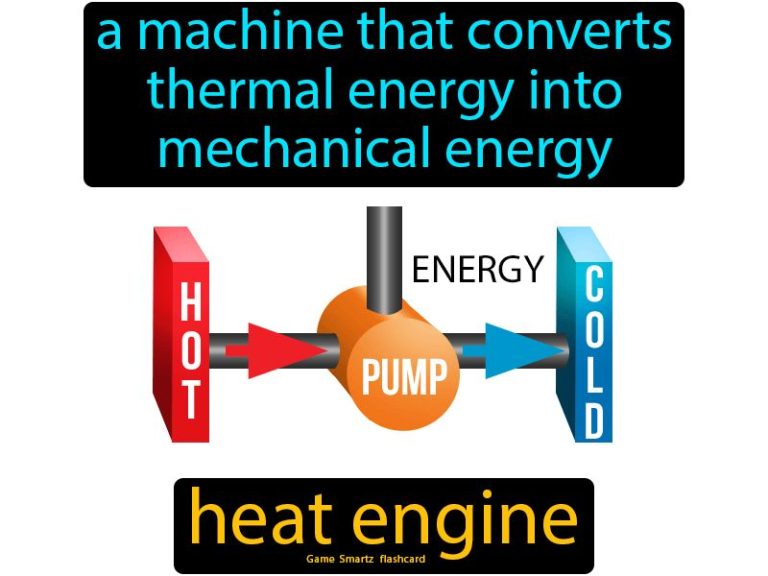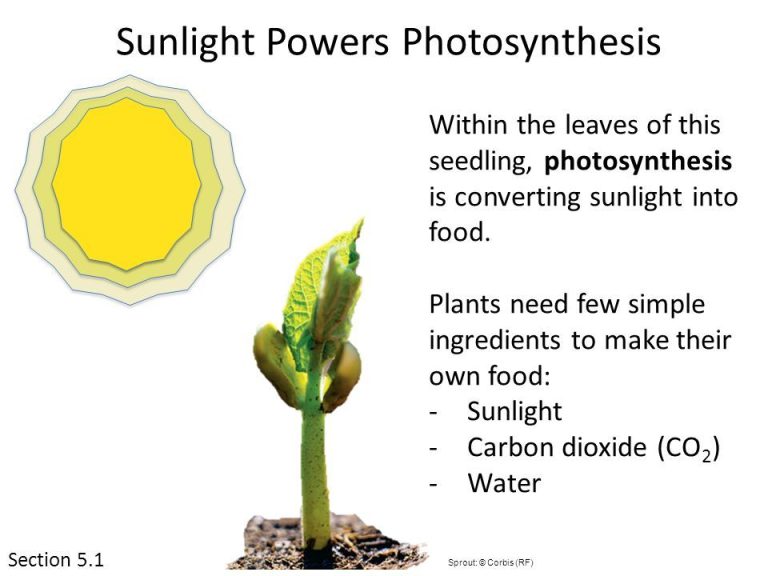What Energy Systems Will Help Combat Climate Change?
Climate change poses an urgent threat. The burning of fossil fuels like coal, oil and gas for energy production is a major contributor to greenhouse gas emissions that cause climate change. As the global population grows and energy demand rises, new cleaner energy systems will be critical to reducing emissions while still meeting the world’s energy needs.
Transitioning to low-carbon energy sources is essential to mitigate climate change. This involves scaling up renewable energy like solar and wind power, advancing technologies like carbon capture and energy storage, improving energy efficiency, and modernizing infrastructure through smart grids. Policy and regulatory actions must also drive the transition.
There are many promising energy solutions, but effectively tackling climate change requires deploying a diverse mix across the energy system. This article explores the key technologies and strategies needed to transform how we produce and consume energy, enabling deep decarbonization while supporting economic growth and improved standards of living globally.
Renewable Energy
Renewable energy comes from natural sources that are constantly replenished, such as sunlight, wind, water, plants, and geothermal heat. The main renewable energy sources are:
Wind – Wind turbines convert the kinetic energy in wind into mechanical power to generate electricity. Wind power capacity has expanded rapidly to over 650 GW globally. Wind is increasingly cost-competitive, but output depends on wind conditions. Offshore wind farms are being built to access stronger winds.
Solar – Solar photovoltaic (PV) panels convert sunlight into electricity. Solar capacity has grown exponentially to over 500 GW globally. Solar PV costs have plunged, making it the cheapest electricity source in many markets. However, output varies with sunshine and weather.
Geothermal – Geothermal power harnesses heat from inside the earth to produce steam to drive turbines. It provides constant baseload supply but is confined to geologically active locations. Installed capacity is around 14 GW globally.
Hydropower – Hydropower utilizes the energy of flowing water to generate electricity via turbines. It supplies 16% of global electricity from over 1,300 GW of installed capacity. However, potential for new major dams is limited.
The main benefits of renewables are providing clean energy with near-zero emissions. They help mitigate climate change and reduce pollution. Renewables are indigenous sources that improve energy security and sustainability. However, their variable output presents grid integration challenges. Storage solutions can help overcome intermittency.
Nuclear Energy
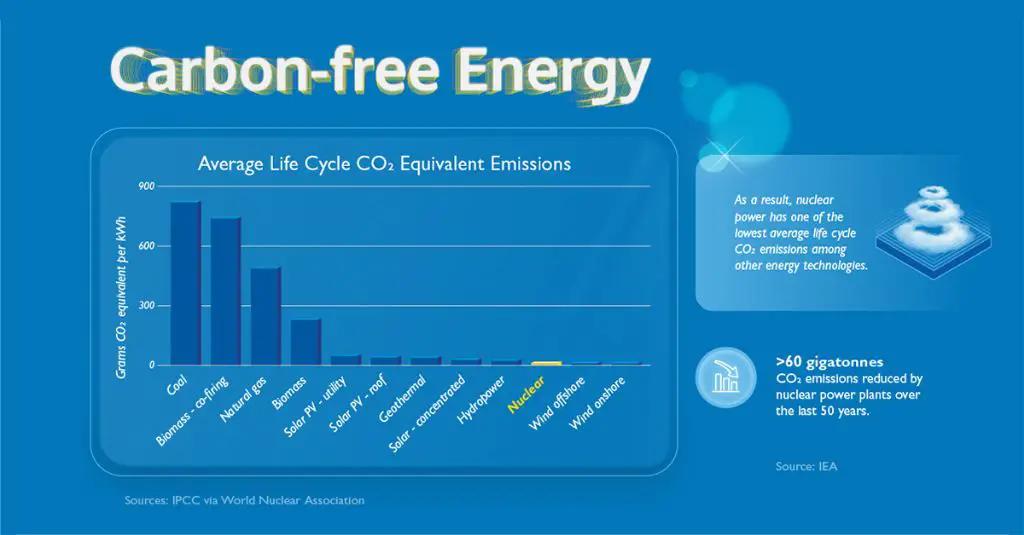
Nuclear energy is an important carbon-free energy source that can help combat climate change. Nuclear power plants produce essentially zero greenhouse gas emissions during operation, and the International Atomic Energy Agency estimates that the use of nuclear energy has avoided over 50 gigatonnes of CO2 since 1971.
Nuclear energy currently provides about 10% of the world’s electricity from around 440 power reactors. Major countries such as France generate over 70% of their electricity from nuclear. With new generation III/III+ reactors and small modular reactors, there is potential for nuclear to supply even greater amounts of electricity.
However, there are challenges with nuclear power. It produces radioactive waste that must be safely stored for long periods. While modern reactors have robust safety systems, past nuclear accidents like Chernobyl and Fukushima have made the public wary of nuclear technology. There are also high upfront capital costs for building new plants.
Overall, nuclear energy is a proven carbon-free technology that will likely need to be part of the global clean energy mix. With proper management and oversight, next-generation nuclear designs can provide safe, economical, and clean electricity to combat climate change.
Carbon Capture
One promising approach for reducing carbon dioxide emissions from fossil fuel use is carbon capture and storage (CCS). This involves capturing CO2 from power plants and industrial facilities before it is released into the atmosphere, then compressing it and transporting it via pipeline to be stored deep underground. CCS could allow continued use of fossil fuels while greatly reducing their climate impact.
The main challenge for CCS is the substantial cost involved. Capturing and compressing CO2 requires significant energy and infrastructure expenses. However, costs are expected to decline as the technology matures and deployment scales up. Governments can help accelerate CCS through funding research, subsidizing early adoption, and establishing legal/regulatory frameworks.
CCS is starting to be implemented globally, though adoption remains limited so far. As of 2022, there are 27 large-scale CCS facilities in operation worldwide, capturing around 40 million tonnes of CO2 annually. Many more projects are in development or construction. CCS is seen as essential for decarbonizing carbon-intensive industries like cement and steel production.
While CCS has great potential for mitigating emissions from fossil fuel use, experts caution it should complement but not replace transitions to renewable energy. CCS has its own environmental risks, and widespread underground injection of CO2 could face public opposition. But alongside other solutions, CCS could play a valuable role in the fight against climate change.
Energy Storage
Energy storage technologies play a critical role in combating climate change by enabling greater use of renewable energy sources like wind and solar power. Renewable energy generation can fluctuate based on weather and time of day. Energy storage provides a solution by capturing excess renewable energy when supply exceeds demand and discharging it when demand exceeds supply. This allows renewables to reliably meet more of our energy needs.
Batteries are one of the leading storage solutions being deployed globally. Lithium-ion batteries have fallen dramatically in cost over the past decade, with prices projected to continue declining. Utility-scale lithium-ion storage connected to solar or wind farms can time shift renewable energy from periods of low demand to peak times when it is needed most. Batteries are also enabling more home solar and electric vehicles.
Pumped hydro storage is another key large-scale energy storage technology. It accounts for around 95% of global storage capacity. Pumped hydro facilities pump water uphill to a reservoir during times of excess electricity generation and then release it downhill through turbines when electricity is needed. New pumped hydro projects face challenges finding suitable locations, but existing facilities provide gigawatts of affordable storage.
Other emerging storage technologies like compressed air, thermal, and gravity storage are seeing increased investment and could grow in impact. Continued innovation and deployment of storage solutions will provide the flexibility needed for higher renewable energy penetration in our electricity mix as we work to address climate change.
Smart Grids
Smart grids refer to the digital optimization and modernization of electrical transmission and distribution systems. By incorporating advanced sensors, controls, and software, smart grids allow utilities to digitally monitor, control, and optimize energy flows from points of generation to end users. This provides numerous benefits:
Smart grids greatly improve the efficiency of transmission and distribution. Advanced sensors and analytics allow utilities to identify areas of energy loss and reduce costs. The two-way flow of information also allows for automatic control adjustments to smooth power distribution in real time.
Smart grids also enable better integration of renewable energy sources like solar and wind onto the grid. The two-way communication systems provide visibility into distributed renewable generation assets. Smart inverters can then modulate power output to maintain stability as renewable resources fluctuate.
In addition, smart grids allow customers to better manage their energy consumption. With smart meters and dashboards, consumers have more insight into their energy use patterns. This allows them to shift flexible loads to off-peak times to save money and reduce strain on the grid.
Overall, transitioning to smart grids is a key step towards building a more efficient, sustainable, and resilient energy future.
Energy Efficiency
Energy efficiency improvements offer a powerful and cost-effective tool in efforts to combat climate change. By using less energy to perform the same tasks, energy efficiency cuts energy waste, saves money and reduces greenhouse gas emissions.
There are major opportunities for energy savings in buildings, industry and transportation:
Building Efficiency
Buildings account for about 40% of global energy usage and approximately 1/3 of greenhouse gas emissions. Simple measures like insulation, energy-efficient lighting, appliances and windows can dramatically reduce energy needs. Smart building design that maximizes natural light and ventilation can further drive savings.
Industrial Processes
Industry accounts for about 1/3 of global final energy demand. Substantial energy efficiency opportunities exist through improved equipment, controls, and management of energy use. Transitioning to more efficient electric motors, enhanced process integration and waste heat recovery are some examples.
Transportation
Transport accounts for around 1/4 of global energy demand. Improving vehicle engine efficiency, reducing weight, improving aerodynamics and rolling resistance, and switching to electric vehicles can all drive substantial efficiency gains.
Globally, investment in energy efficiency needs to increase by a factor of 6 from current levels to realize its full potential. Stronger policies, financing support, and innovative business models can help scale energy efficiency efforts worldwide.
Decentralized Energy
Decentralized energy systems, such as microgrids, rooftop solar, and community renewables, are emerging as an important way to combat climate change and increase energy resilience. Rather than relying solely on centralized utility-scale power plants, decentralized energy allows households, businesses, and communities to generate their own electricity locally. This has a number of advantages:
Benefits of Decentralized Energy:
- Reduces greenhouse gas emissions since locally generated renewable energy replaces fossil fuels
- Enables communities to be more self-sufficient for their energy needs
- Increases grid resilience as decentralized systems can operate independently if the main grid goes down
- Provides access to electricity for rural or underserved communities not connected to the centralized grid
- Allows consumers and communities to have greater control over their energy mix and sources
Some key examples of decentralized energy systems gaining adoption include:
- Microgrids – neighborhood-scale grids that can disconnect from the traditional grid and operate autonomously
- Rooftop solar – solar panels installed on homes, warehouses, schools, and businesses
- Community solar/renewables – shared solar and renewable energy projects developed and owned by local communities
Despite the benefits, there are challenges to further adoption of decentralized energy including upfront costs, the need for technical expertise, policy and regulatory hurdles, and utility opposition. But the advantages are substantial and overcoming these hurdles may provide an opportunity to accelerate the clean energy transition.
Policy Actions
Governments worldwide have implemented a variety of policy actions aimed at combatting climate change and transitioning to clean energy systems. Some of the most impactful policies include:
Subsidies for clean energy: Providing tax incentives, rebates, and other financial subsidies to make renewable energy sources like solar, wind, and geothermal more affordable. This helps incentivize their development and adoption.
Carbon pricing: Putting a price on carbon emissions through a carbon tax or cap-and-trade system. This makes high-emissions energy sources more expensive, encouraging the shift to cleaner options.
Clean energy mandates: Setting renewable portfolio standards that require utilities to source a minimum percentage of their electricity from renewables. Mandating net-zero energy standards for new buildings also accelerates the transition.
Phase-out of fossil fuel subsidies: Ending direct subsidies provided to the fossil fuel industry helps account for their environmental externalities and levels the playing field for clean energy.
Green investment programs: Establishing government-led green banks and funds to finance renewable energy projects, electric vehicle infrastructure, grid modernization, and other climate-friendly initiatives.
Updating grid infrastructure: Investing in modernizing electricity grids and transmissions systems to handle increasing renewable penetration. Enabling two-way flows facilitates decentralized clean energy.
Stricter regulations on emissions and efficiency: Setting more ambitious emissions reduction targets and standards for energy efficiency in buildings, appliances, vehicles, and industry drives innovation and progress.
Conclusion
In summary, the most promising energy systems to help combat climate change are renewable energy, nuclear energy, carbon capture, energy storage, smart grids, energy efficiency, and decentralized energy. The scale of change needed to reach climate goals is truly massive. It will require rapidly scaling up and deploying all of these solutions simultaneously across the world. This monumental effort provides an opportunity to transition to a clean energy economy that is more sustainable, equitable and prosperous. Although the technical solutions exist, the bigger challenge is enacting supportive policies and public engagement to fundamentally transform how we produce and consume energy. With coordinated action grounded in science, technology and justice, a zero-carbon future is within reach.

